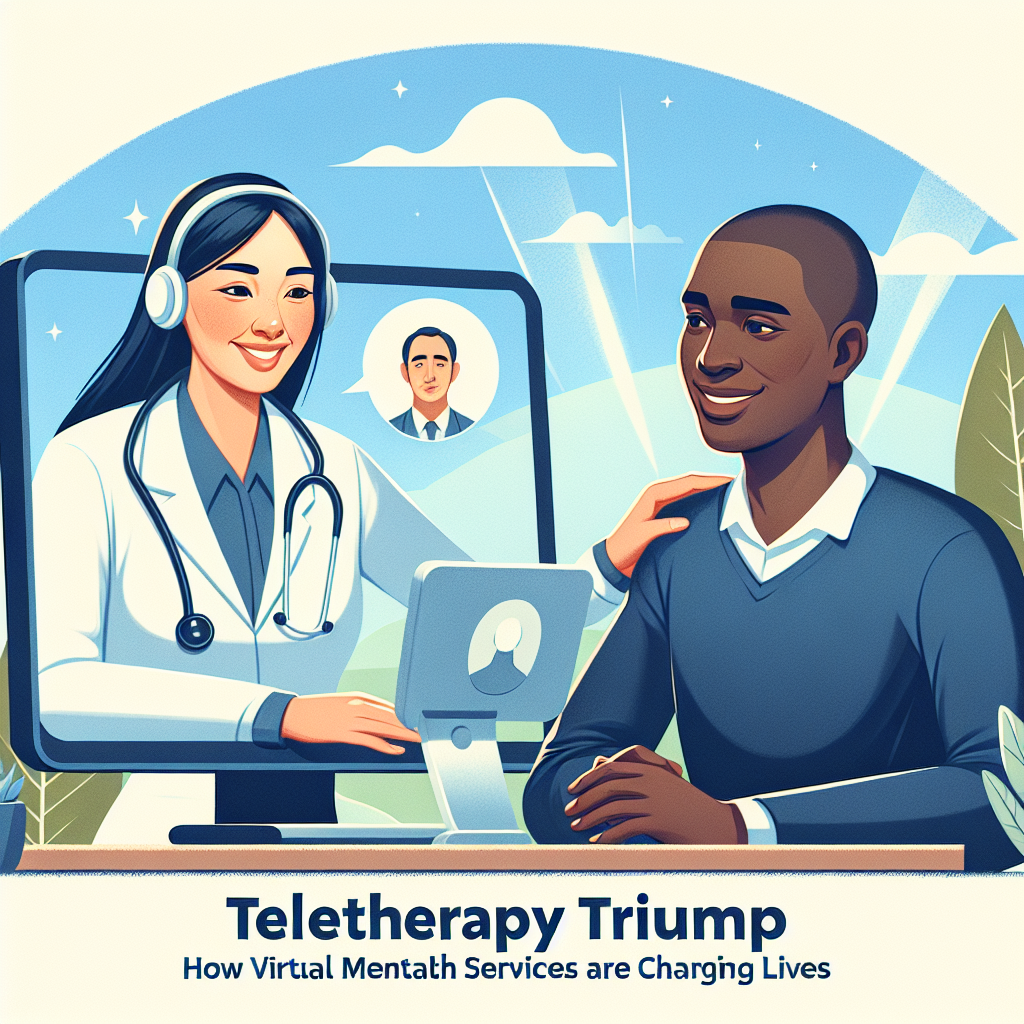
Introduction
In recent years, the landscape of mental health care has undergone a transformative shift. Teletherapy, or virtual mental health services, has emerged as a vital solution, especially during unprecedented times. Perhaps you’re wondering, how exactly has teletherapy triumphed in changing lives? How has the integration of technology into mental health care rejuvenated access, reduced stigma, and bridged gaps for countless individuals in need? This article explores the compelling narrative of teletherapy’s impact and reveals how it’s making a significant difference in the lives of many around the globe.
The Rise of Teletherapy
A New Era of Mental Health Services
Teletherapy isn’t just a trend; it’s a revolution in how we perceive and approach mental health. With the onset of the COVID-19 pandemic, many mental health professionals transitioned to virtual platforms. According to a Harris Poll conducted in early 2021, over 55% of adults reported that they had received some form of digital mental health care. This shift highlights a fundamental truth: teletherapy provides an accessible avenue for individuals who may have previously been deterred from seeking help.
Benefits of Embracing Technology
The benefits of teletherapy are profound. Below are some of the ways this innovative approach is changing lives:
- Accessibility: Individuals in rural areas or with mobility issues can easily access services without traveling long distances.
- Privacy: Many individuals find online therapy less intimidating, fostering openness and honesty.
- Flexible Scheduling: Teletherapy offers flexibility in scheduling, making it easier for people with busy lives to prioritize their mental health.
Real-Life Case Studies
To illustrate the significant impact of teletherapy, consider the following case studies:
Case Study 1: Sarah’s Journey
Background: At 32, Sarah had struggled with anxiety and depression for years. Living in a remote area, her options for in-person therapy were limited.
Teletherapy Triumph: After discovering a local therapist who also offered teletherapy, Sarah began her journey. The convenience of virtual sessions allowed her to integrate therapy into her life seamlessly. Within months, Sarah reported feeling more empowered and less isolated.
Relevance: Sarah’s story is a testament to how teletherapy can overcome geographical barriers and enhance accessibility for individuals in need.
Case Study 2: Mark’s Transformation
Background: At the height of the pandemic, Mark, a 45-year-old father dealing with job loss, felt overwhelmed and depressed.
Teletherapy Triumph: He reached out for virtual counseling and connected with a therapist specializing in cognitive behavioral therapy (CBT). Over a few months, Mark learned coping strategies that significantly improved his emotional well-being.
Relevance: Mark’s experience reveals how timely intervention through teletherapy can provide individuals with the support they need during crises.
Navigating Challenges in Teletherapy
Potential Drawbacks
While the benefits are overwhelming, it’s essential to address some challenges associated with teletherapy:
- Technical Issues: Poor internet connections can interrupt sessions, leading to frustration.
- Limited Non-Verbal Cues: Therapists may miss out on non-verbal cues that could be crucial in understanding a patient’s state.
- The Digital Divide: Not everyone has equal access to technology or the internet, which could hinder participation.
Overcoming Barriers
Many frameworks are in place to address these barriers. Providers are increasingly improving their platforms to ensure a smooth experience. Additionally, initiatives are underway to enhance digital literacy and access to technology for underserved populations.
The Future of Teletherapy
Innovations on the Horizon
The potential for teletherapy is vast, with many exciting innovations on the horizon. Here are a few emerging trends:
- AI Integration: Artificial intelligence is being utilized to enhance personalization in therapy, better matching therapists with patients based on needs and compatibility.
- Mobile Apps: Numerous mental health applications are emerging, complementing traditional therapy with self-help techniques and community support groups.
Shifting Perceptions of Mental Health
Societal attitudes toward mental health care are shifting for the better. Teletherapy has played a vital role in normalizing therapy, making it an expected part of self-care rather than a last resort.
Destigmatization Through Accessibility
As teletherapy continues to gain traction, the stigma often associated with seeking mental help diminishes. With increased access comes a greater understanding that mental health is just as essential as physical health—a paradigm shift that can lead to a healthier society.
Conclusion
Teletherapy triumphs in changing lives by making mental health services more accessible, affordable, and stigma-free. By embracing technology, we empower individuals to prioritize their mental well-being without the limitations of traditional therapy. Each personal story, like those of Sarah and Mark, reinforces the undeniable impact of teletherapy. It’s an invitation for anyone struggling to take the first step—because support is only a click away.
Actionable Insights
- Explore Teletherapy Options: Research local therapists who offer teletherapy and read reviews to find the best fit.
- Set Goals: Before starting therapy, set clear personal goals to maximize the effectiveness of your sessions.
- Communicate Openly: Use virtual sessions to express concerns about technology or the therapy process itself.
FAQs
1. What is teletherapy?
Teletherapy refers to therapy sessions conducted via digital platforms such as video calls, phone calls, or chat applications.
2. Is teletherapy effective?
Research indicates that teletherapy can be as effective as in-person therapy, especially for conditions like anxiety and depression.
3. How do I find a teletherapist?
You can search online directories, ask for recommendations from your healthcare provider, or check with your insurance company for covered teletherapy providers.
4. Will my insurance cover teletherapy?
Many insurance providers have expanded coverage for teletherapy due to its increasing demand, but it’s essential to check with your individual plan.
5. What if I face technical issues during a session?
If you experience technical difficulties, pause the session to troubleshoot. Most therapists are understanding and will work with you to find a solution.
In summary, Teletherapy Triumph: How Virtual Mental Health Services Are Changing Lives is not just a hashtag; it’s a movement towards a healthier, more open society. As we continue to embrace the digital age, we pave the way for more significant breakthroughs in mental health care, ensuring that help is always within reach.

















